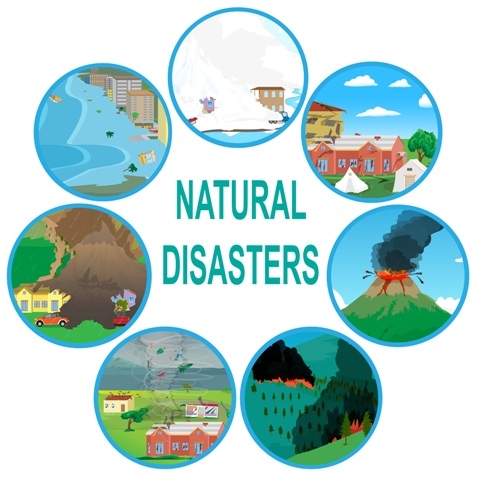What are the main factors that contribute to natural disasters?
Friday - October 18, 2024 12:42 pm ,
Category : WTN SPECIAL

Natural disasters are catastrophic events that occur due to natural processes of the Earth. They include earthquakes, hurricanes, floods, wildfires and volcanic eruptions. Several factors contribute to the occurrence and intensity of natural disasters.
Geological factors play a significant role, like earthquakes are caused by the movement of tectonic plates beneath the Earth’s surface. Volcanic eruptions are also linked to the activity of these plates. Regions situated along fault lines, like the Pacific Ring of Fire, are particularly prone to such disasters.
Climate and weather conditions are also crucial. Hurricanes and typhoons are driven by warm ocean waters and atmospheric conditions that promote the development of storms. Floods can result from prolonged heavy rains, rapid snowmelt or hurricanes, while droughts are often caused by long periods of abnormally low rainfall.
Human activity significantly exacerbates the effects of natural disasters. Deforestation, urbanization and poor land management can increase the likelihood of landslides and floods. The rise in global temperatures, due to climate change, intensifies storms and alters precipitation patterns, leading to more frequent and severe weather related disasters.
Also environmental factors such as the topography of a region affect disaster vulnerability. Coastal areas are more susceptible to tsunamis and hurricanes, while mountainous regions face the threat of landslides.
Natural disasters are a result of a combination of natural processes and human influences. While we cannot prevent these disasters, understanding the contributing factors helps in mitigating their impact through better preparedness and sustainable practices.
Geological factors play a significant role, like earthquakes are caused by the movement of tectonic plates beneath the Earth’s surface. Volcanic eruptions are also linked to the activity of these plates. Regions situated along fault lines, like the Pacific Ring of Fire, are particularly prone to such disasters.
Climate and weather conditions are also crucial. Hurricanes and typhoons are driven by warm ocean waters and atmospheric conditions that promote the development of storms. Floods can result from prolonged heavy rains, rapid snowmelt or hurricanes, while droughts are often caused by long periods of abnormally low rainfall.
Human activity significantly exacerbates the effects of natural disasters. Deforestation, urbanization and poor land management can increase the likelihood of landslides and floods. The rise in global temperatures, due to climate change, intensifies storms and alters precipitation patterns, leading to more frequent and severe weather related disasters.
Also environmental factors such as the topography of a region affect disaster vulnerability. Coastal areas are more susceptible to tsunamis and hurricanes, while mountainous regions face the threat of landslides.
Natural disasters are a result of a combination of natural processes and human influences. While we cannot prevent these disasters, understanding the contributing factors helps in mitigating their impact through better preparedness and sustainable practices.



